Mastering Living Room Design with Two Focal Points
When your living room has two focal points, arranging furniture and decorating can feel like a puzzle. How do you tackle this common issue?
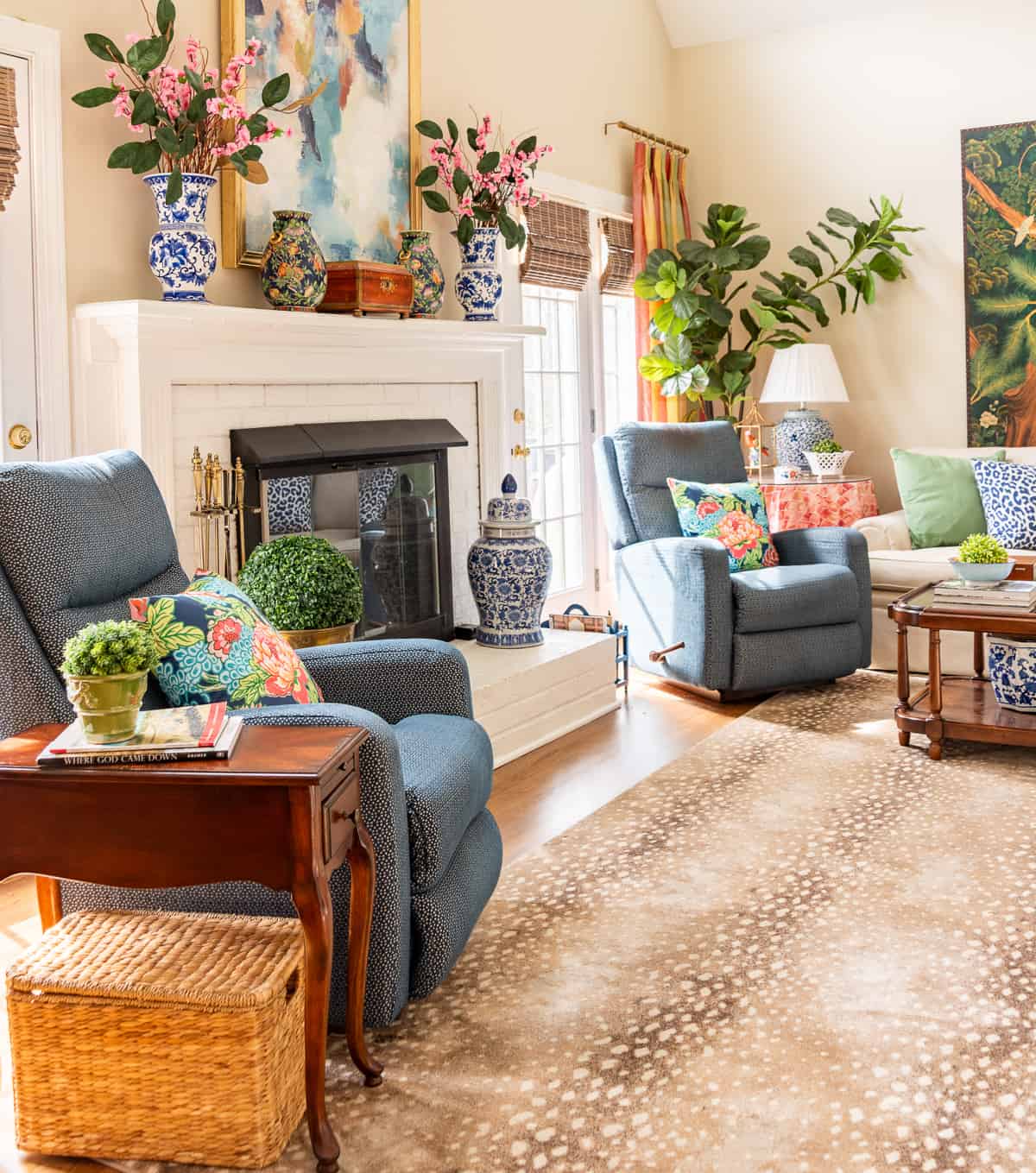
I know from experience—my own living room has a fireplace and French doors on one side and a large entertainment center on the opposite side. Finding a way to balance both sides has definitely been a challenge!
Welcome to chapter 5 of the Simply Decorating Series; a free resource designed especially for the diy decorator who is eager to transform their home into a place that reflects their personal style and needs. Each post breaks down complex design ideas into simple, actionable steps. If you’re just beginning the series, start with chapter 1, How to Decorate a Room – Where To Start.
Let’s explore clever ways that you can handle this decorating dilemma in your own home.
In a living room, the primary focal point should naturally take center stage, but that doesn’t mean other elements can’t have their moment, too.
In fact, in open-concept spaces, it’s common to have a focal point at one end of the room, with a secondary focal point providing balance and interest at the other end.
How to find the focal point in your living room?
Identifying the main focal point in your living room might feel like being a detective in your own space, but don’t worry—it’s easier than you think!
Start by scanning the room. What catches your eye first? What stands out as the most dominant feature in the room? It could be anything from a large picture window or French doors framing a beautiful view, to a grand fireplace mantel anchoring the space.
These features are natural focal points. Think of them as the “anchors” of your room, with everything else designed to complement and revolve around them.
The challenge arises when there’s a secondary focal point—like an accent wall, an architectural feature, or even a statement piece of furniture.
These can throw a wrench into your living room furniture arrangement, especially if they’re on opposite sides of the room (like mine). For example, I have a fireplace on one side and a large entertainment center on the other.
In fact, depending on how you enter the room, you could even argue that the decorative screen behind my couch is a third focal point!
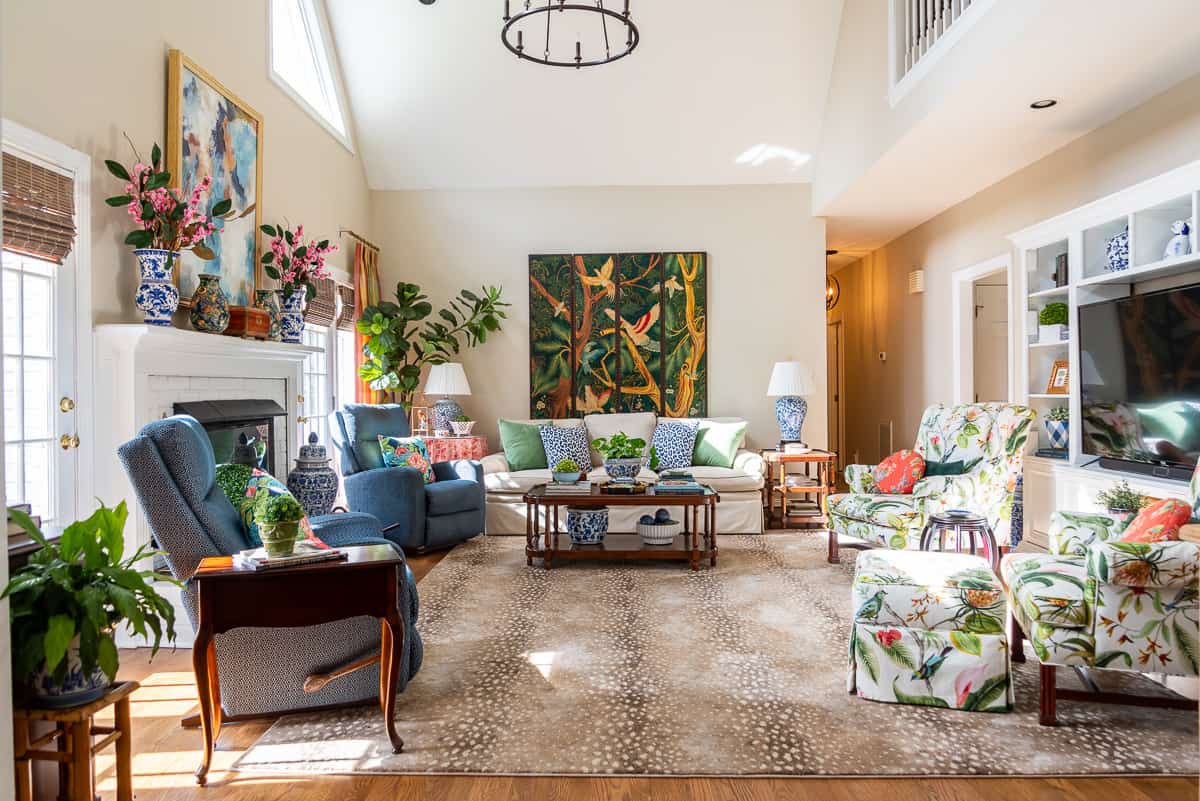
Designer strategies for two focal points
When you have two focal points in a room, it’s all about balancing them without letting one overpower the other.
Here are some designer-approved strategies to help you create harmony in a living room with multiple focal points:
Balance visual weight
When dealing with a living room that has dual focal points, the key to making it all work is balancing the visual weight. Furniture placement plays a crucial role in creating harmony in the room.
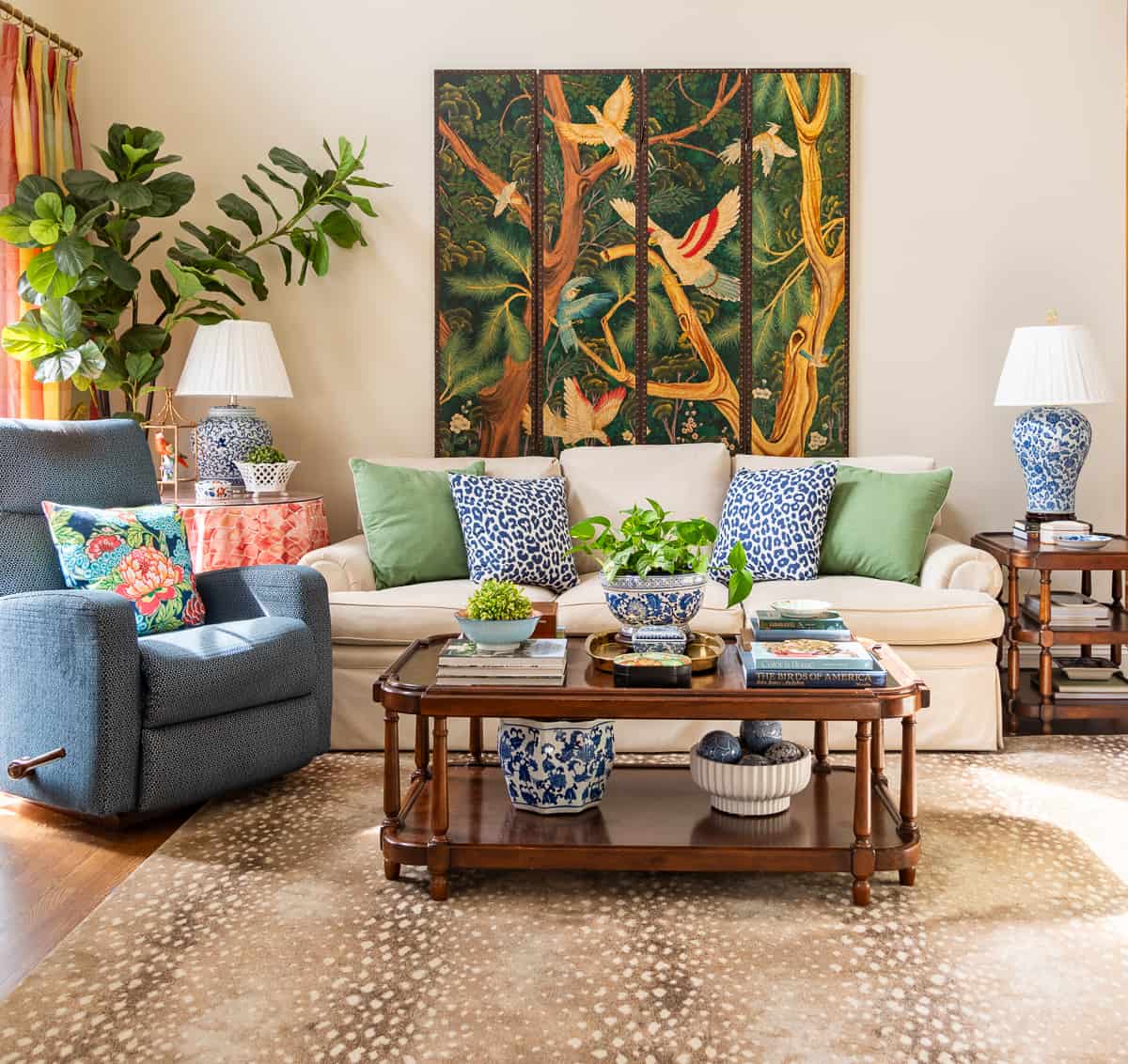
Think of your living room as a stage where each element is a supporting actor. The goal is to arrange the furniture and decor in such a way that each focal point—whether it’s the main one or the secondary one—remains important without overshadowing the other.
Size and Scale
If one focal point is significantly larger or more visually commanding (like a large window or a striking piece of art), you can balance the visual weight by enhancing the other focal point.
For instance, adding larger decorative elements to a mantel can help balance out a sizable entertainment center in the room, just like I’ve done in my own space.
Symmetry and Asymmetry
Depending on the layout and focal points, you can use either symmetry or asymmetry to create balance.
For example, if your room has a fireplace and a large picture window on a perpendicular wall, the furniture arrangement should draw more attention to one focal point while downplaying the other.
In a symmetrical layout, place two identical sofas facing each other, aligned with the fireplace, and position a coffee table in between. This directs the attention toward the fireplace and away from the window.
In an asymmetrical setup, you could place a sectional sofa with its longer side facing the fireplace, and its shorter side positioned to face the window.
Add a chair in the opposite corner, facing the sectional. This arrangement still prioritizes the fireplace but allows for a more dynamic, balanced feel.
Color and Texture Play
Colors and textures are powerful tools for linking two focal points.
If one feature is colorful or textured, try incorporating similar hues or materials near the other focal point to create cohesion. Think fabrics, rugs, furniture with natural fibers, or art pieces that reflect similar tones or textures.
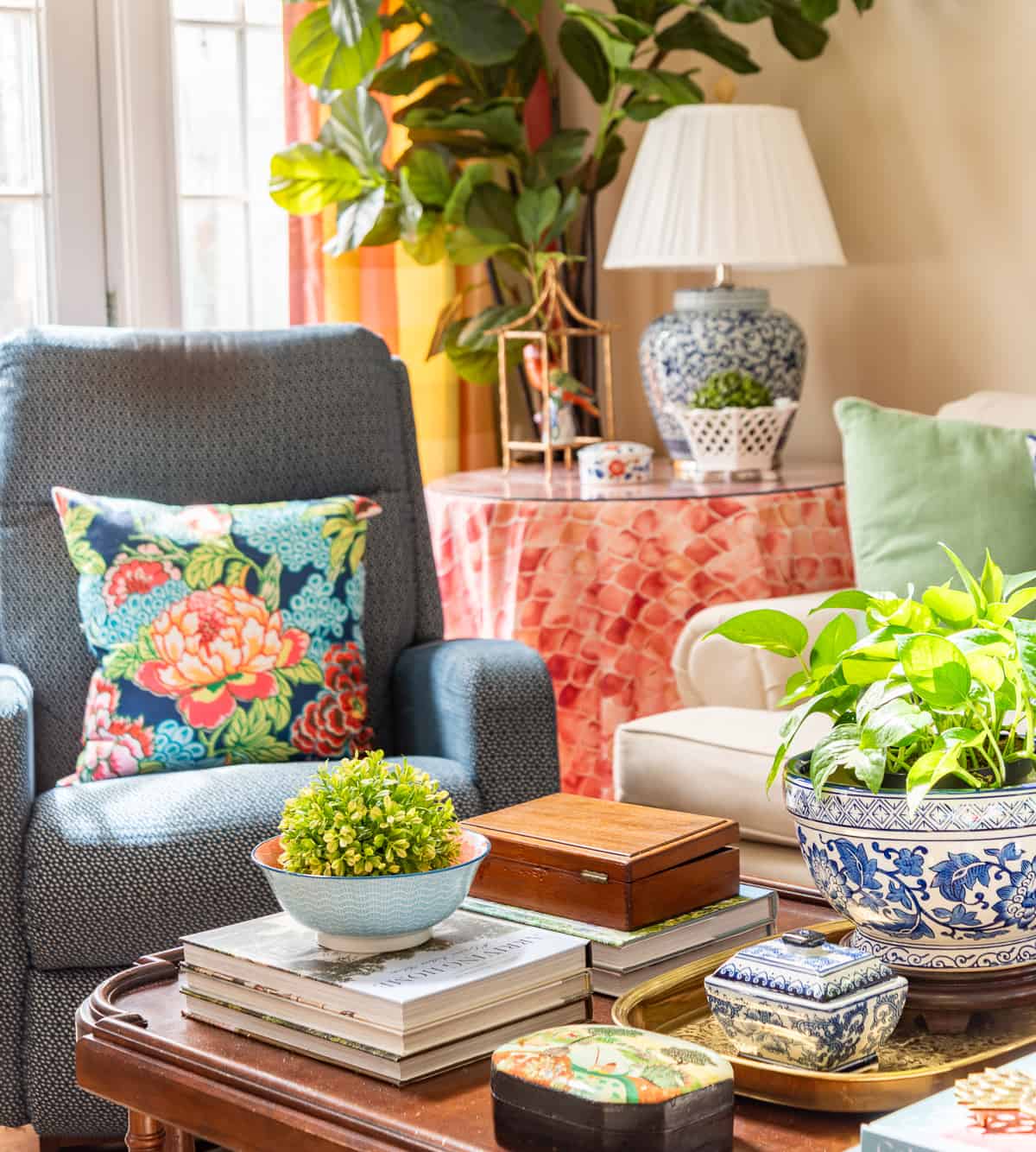
Lighting as a Balancing Tool
Lighting can also be a great way to balance the room’s visual weight. Accent lighting can draw attention to artwork or architectural features, while natural light from windows can be enhanced with the right window treatments, providing a balanced and inviting atmosphere.
Decorative Elements
Incorporate decorative elements like rugs, cushions, plants, and artwork to help distribute attention between your focal points.
These smaller, attention-drawing pieces can tie the room together and balance the visual weight between the two dominant features.
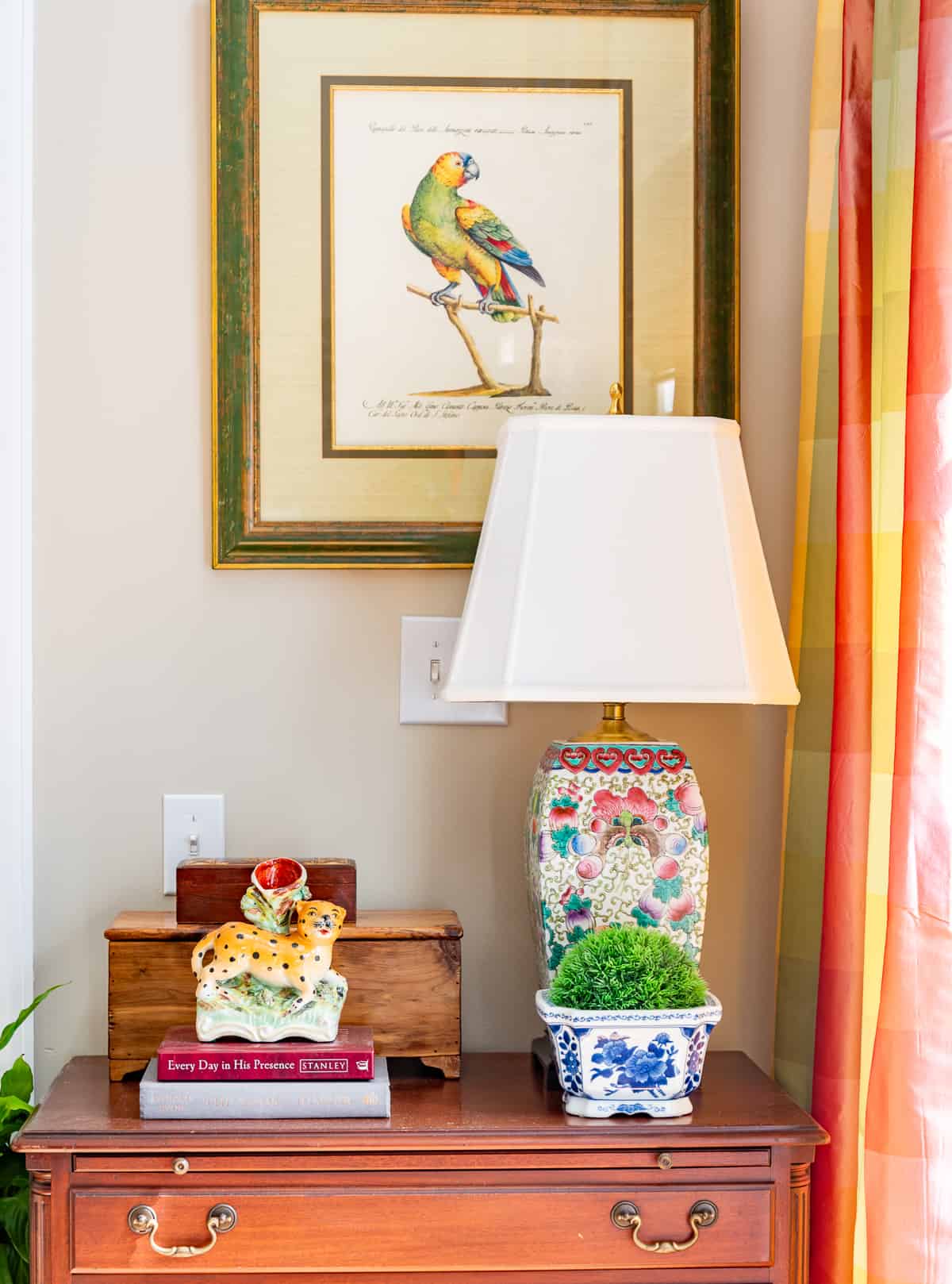
The use of negative space
Negative space is the art of intentionally leaving certain areas of your room empty, and believe it or not, it can be just as impactful as the furniture and decor you choose. But why is negative space so important in a room with two focal points?
I actually wrote a whole blog post about using the negative space in a room, but picture this: You have a stunning fireplace on one side and a breathtaking bay window on the other. If every inch of your room is filled, it’s like a visual shouting match—everything competes for attention, and it can quickly feel overwhelming.
By thoughtfully preserving negative space, however, each focal point gets its moment to shine.
Think of negative space as a visual ‘palette cleanser.’ It gives your eyes a rest and provides a clear path to take in each focal point without distraction.
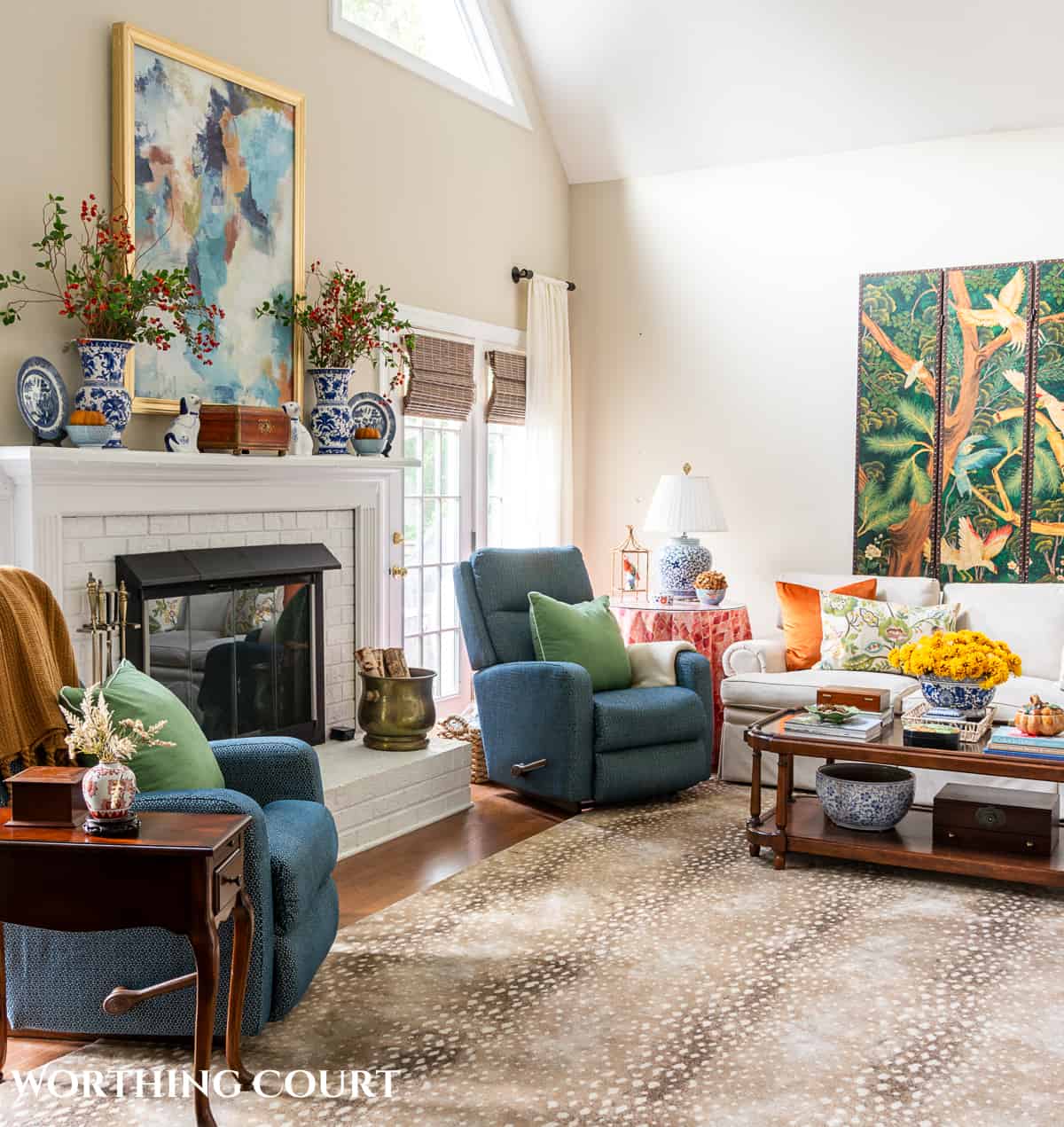
In many ways, it’s like the quiet space in a room full of louder conversations. When used correctly, negative space not only makes the room more aesthetically pleasing but also more relaxing to be in.
Additionally, negative space has the magical ability to make a room feel bigger, which is especially useful in smaller spaces. By not overcrowding the room, each focal point stands out more, and the space feels more open and airy.
Negative space doesn’t always mean bare walls or empty corners, though. It can also refer to the spacing between furniture, the area around your coffee table, or even the way you hang art on the walls.
The goal is to create balance and breathing room so that the room feels harmonious, not cluttered.
In short, when you’re working with two focal points, negative space is like the quiet best friend who ensures both stars of the show shine equally.
Attention to rhythm and repetition
Think of rhythm in design like the beat in your favorite song. It’s what gives a room life, keeping your eyes moving naturally and making the space feel cohesive.
When you have two focal points, like a cozy fireplace and a stunning window view, rhythm helps create a connection between them.
So, how do you achieve this? It’s all about repeating certain design elements—whether that’s color, shapes, textures, patterns, or materials.
For example, if you have a blue sofa in front of your fireplace, you could repeat that color in throw pillows near the window.
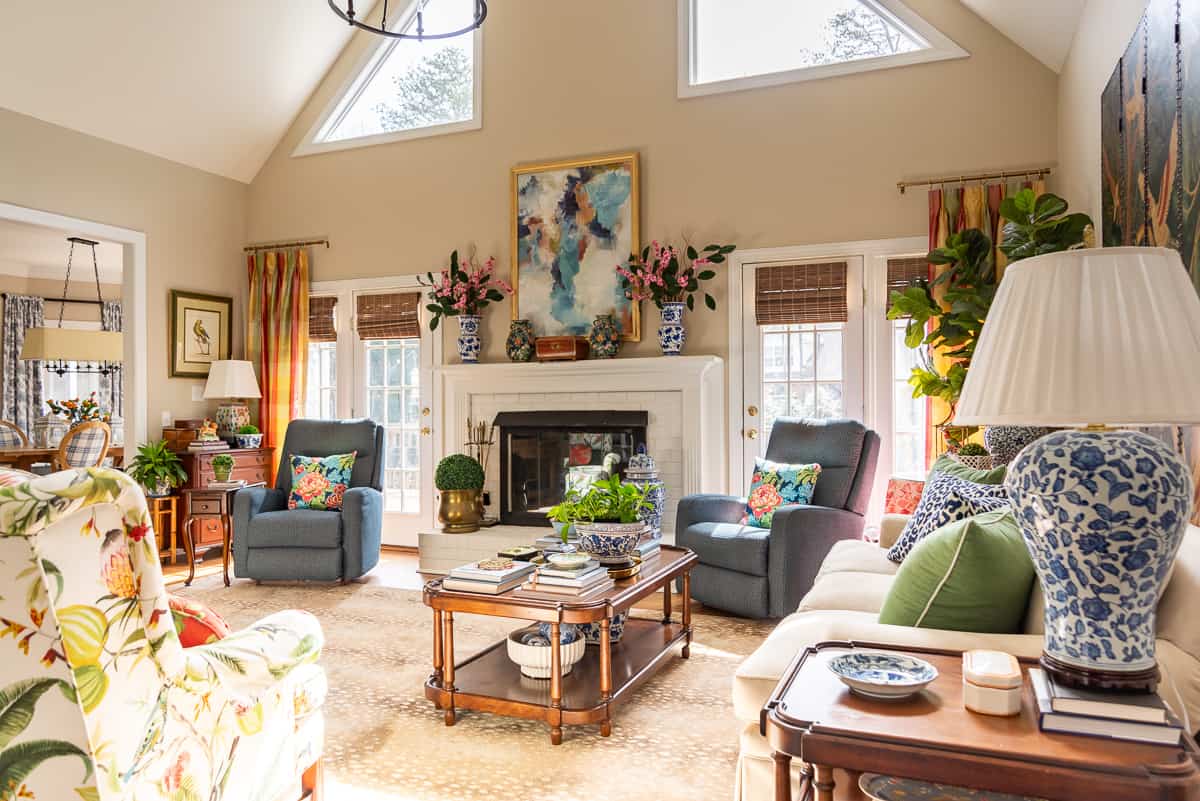
Or, if there’s a circular mirror above the fireplace, you might add a round coffee table or incorporate circular patterns in rugs or cushions around your other focal point.
Repetition creates a sense of harmony and order, subtly telling a story throughout your space. It makes each element feel connected, as if it’s part of a whole.
This is especially useful in a room with two focal points because it helps guide the eye smoothly from one area to the other without jarring interruptions. It’s like leaving a visual trail of breadcrumbs that leads you around the room.
That said, don’t overdo it. A little repetition goes a long way. It should feel natural, not like you’ve walked into a room where everything is overly matchy-matchy. The goal is to connect each focal point in a way that feels effortless and harmonious.
Strategic contrast and variety
While repetition has its place, contrast can also be incredibly effective. It’s a great opportunity to juxtapose different styles, textures, or colors near each focal point, creating distinct yet harmonious areas within the room.
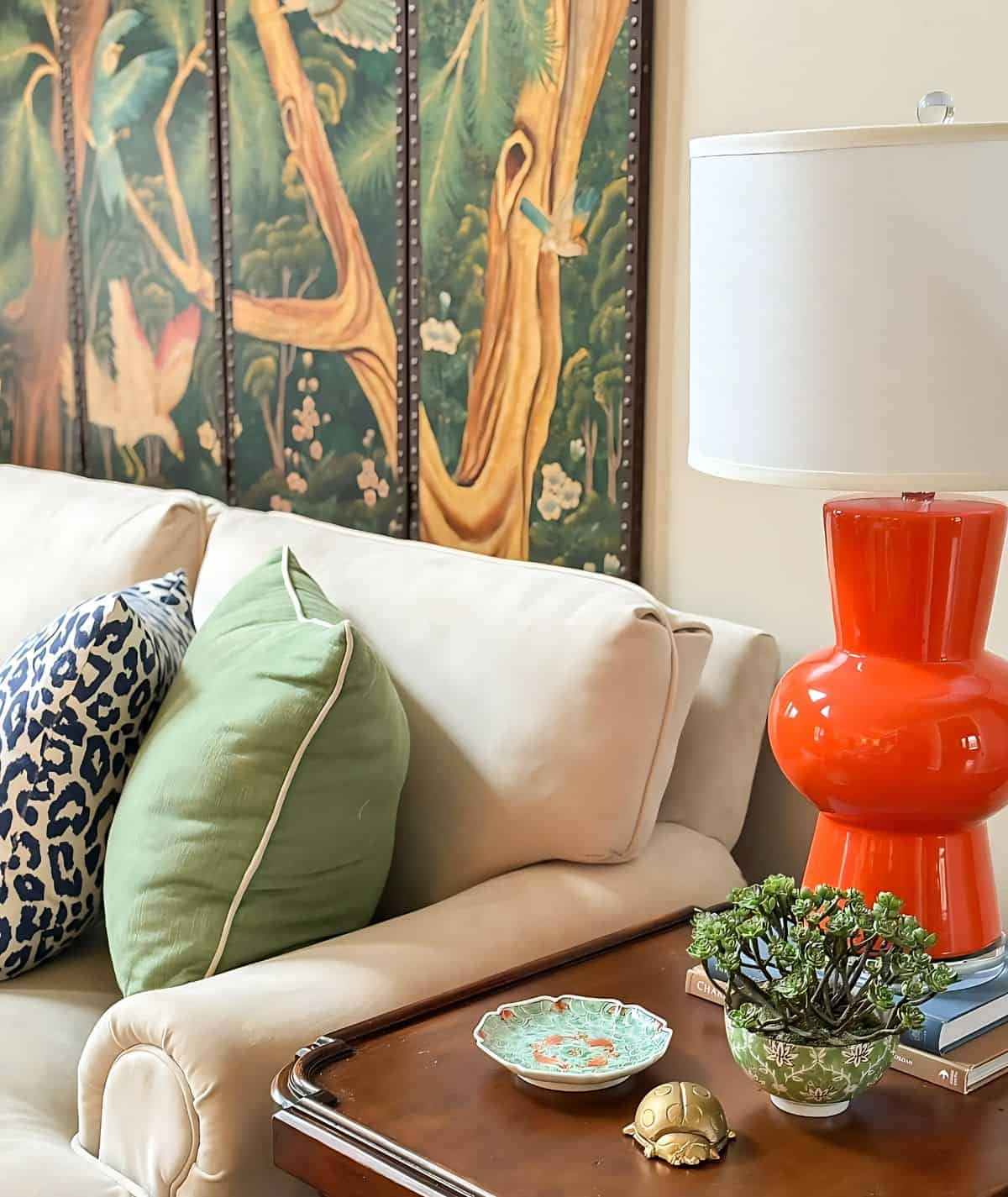
Imagine you’re an artist with a blank canvas—contrast and variety are your vibrant paint colors that bring everything to life. By mixing different styles, textures, or colors near each focal point, you create spaces that feel unique yet connected.
For example, let’s say you have two focal points in your living room: a large TV on one wall and a rustic fireplace on the other. They’re quite different, right? That’s where the magic of contrast comes in.
By playing up their differences, you create an interesting and dynamic space. Pairing the sleek, polished look of the TV with the rough, warm textures of the fireplace adds depth and character to the room.
Variety is all about mixing things up—different shapes, sizes, textures, and colors. Imagine one focal point is a modern, traditionally designed fireplace at one end of the room.
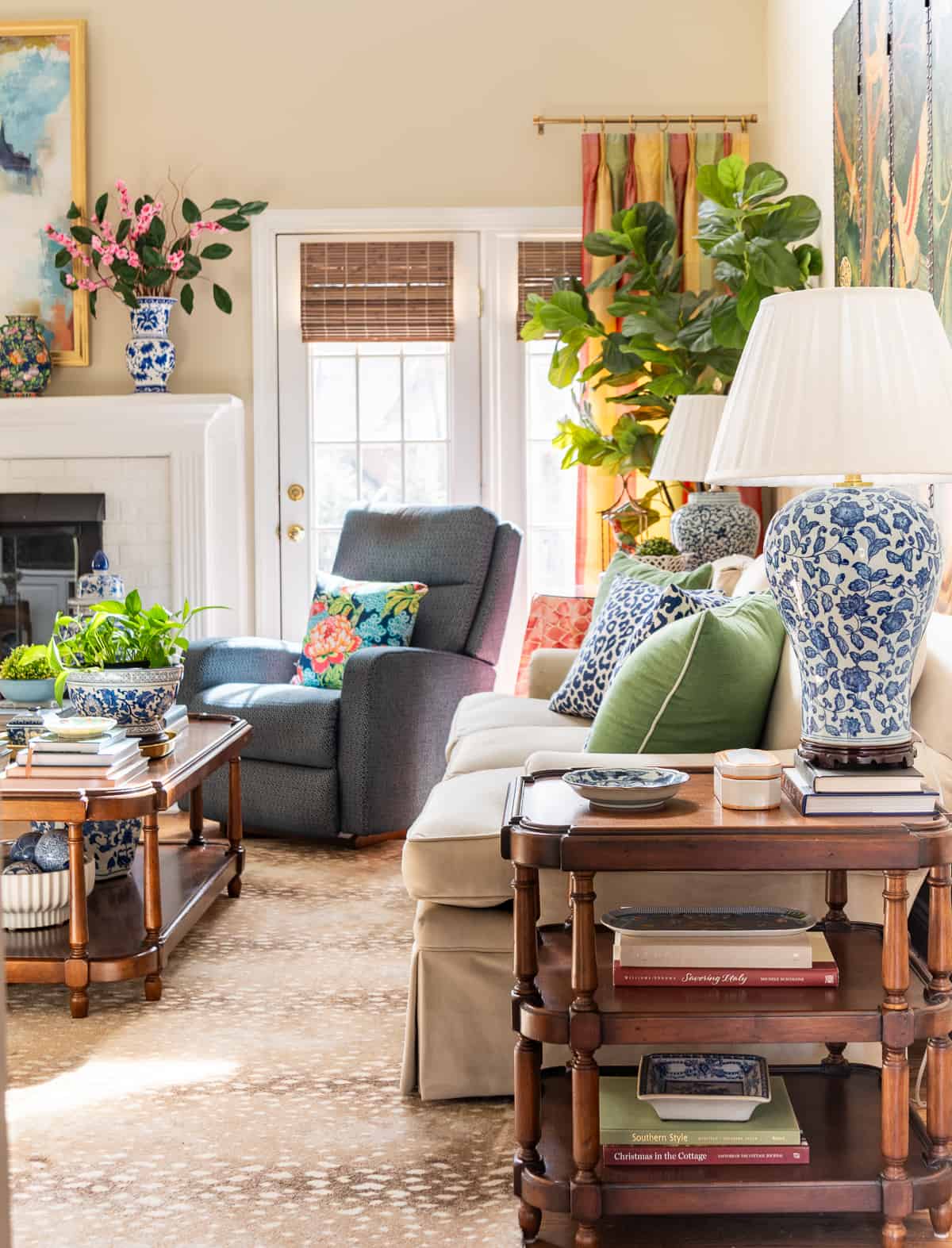
To contrast this, you might place a large, modern sectional sofa in front of a gallery wall. The difference between the two creates a visual tension that’s intriguing and engaging.
So, how does this help with two focal points? When done well, contrast and variety make each focal point stand out, complementing rather than competing with one another.
How to make a focal point in living room without a fireplace?
Do you live in a basic home or apartment with no clear focal point—no large windows, no fireplace, and no architectural features? Can you even have a focal point in a living room without those elements? Absolutely!
In fact, it’s a perfect opportunity to get creative and highlight what makes your space unique.
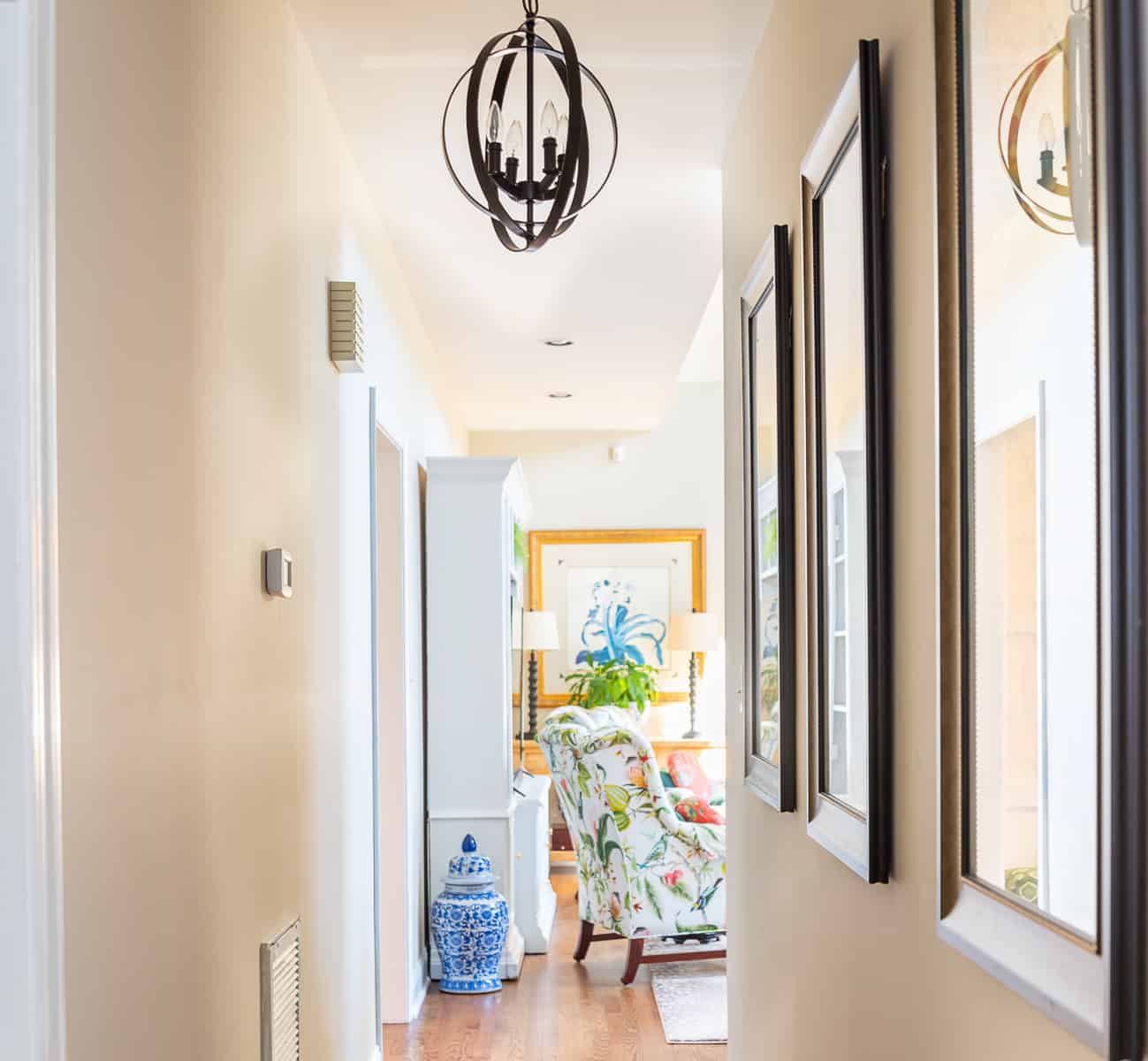
Even if you don’t have large windows, they can still be a shining star in your room. Dress them with a beautiful window treatment or leave them bare to showcase a lovely view. The natural light that pours in can turn a window into the heart of the room.
But if windows aren’t your room’s strong suit, don’t worry! You can always create an accent wall. Whether it’s with a bold paint color, striking wallpaper, or a board and batten treatment, a blank wall is a canvas waiting to be transformed into an eye-catching feature.
Art can also be a game changer. A large, statement piece of art can anchor the room and set the tone.
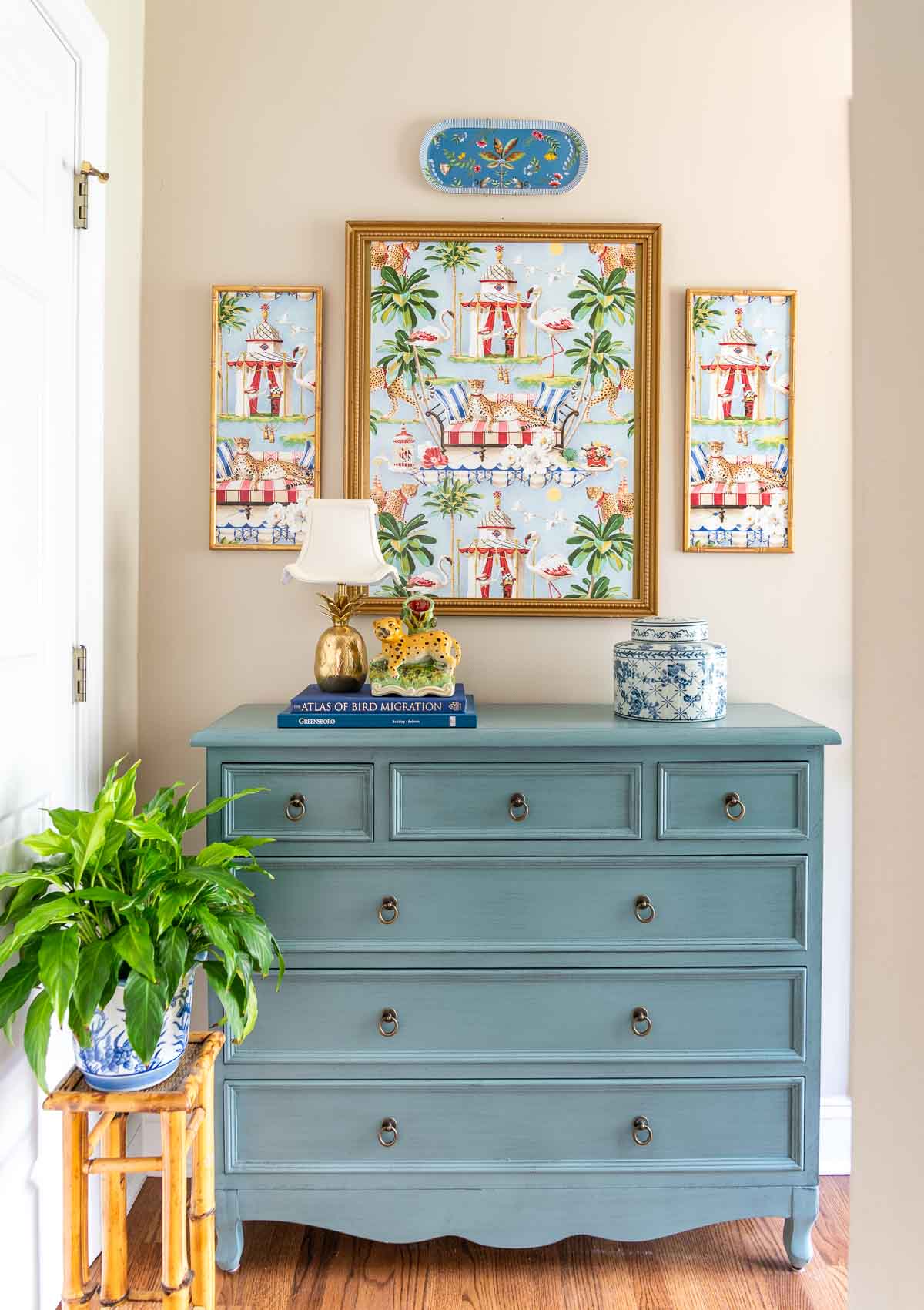
Whether it’s a vibrant painting, a monochromatic abstract piece, or a gallery wall with a collection of smaller works, art has the power to define a space and make it come alive.
Lighting plays a major role too. A statement chandelier, a contemporary floor lamp, or even a string of fairy lights can draw the eye and add warmth and charm to your space.
Even a well-styled bookcase can serve as a focal point. It’s not just for storage—it’s a chance to display your personal style. Style it with books, plants, and unique knick-knacks to create a conversation starter.
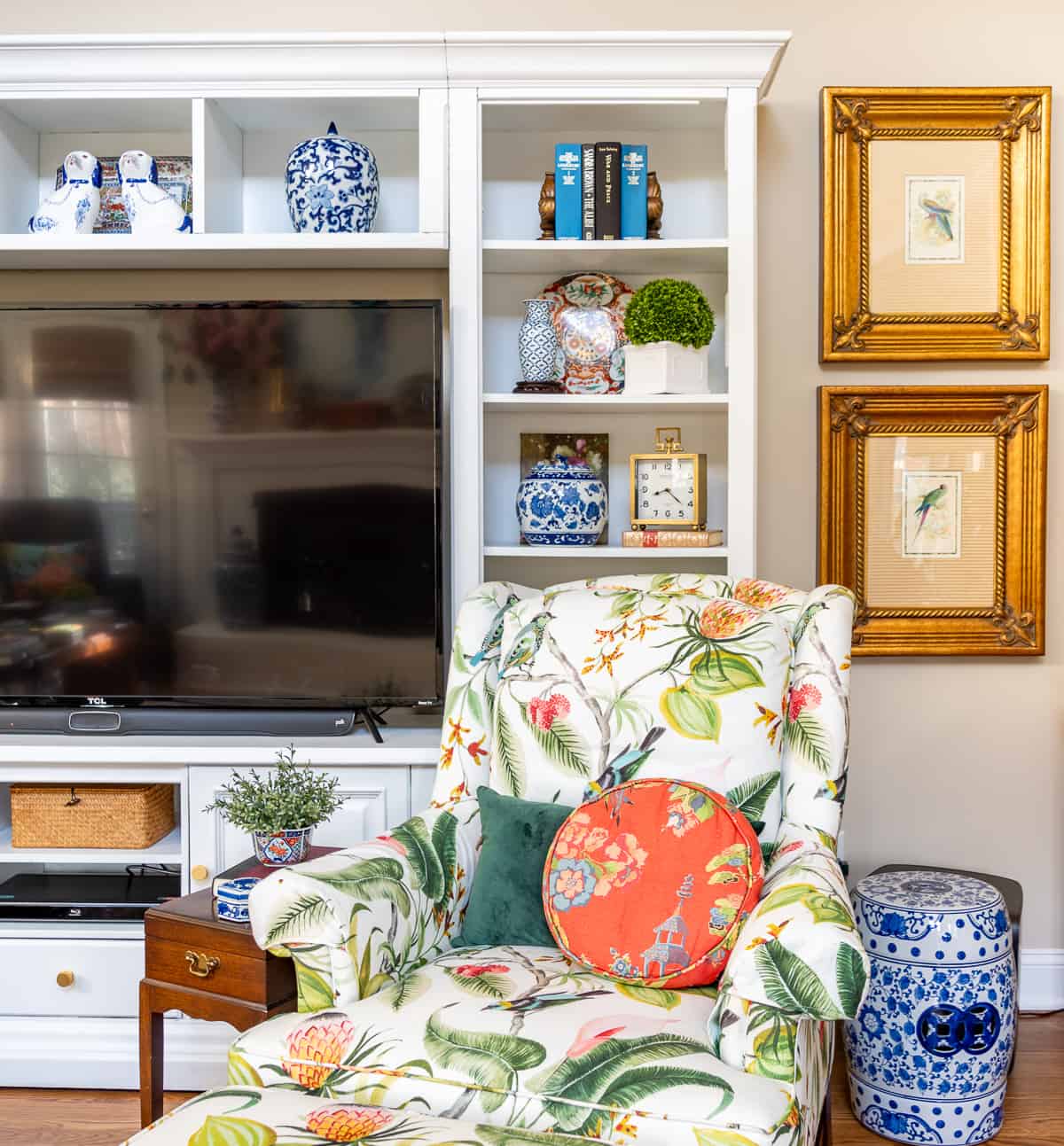
A cozy nook can become a focal point too. A plush armchair, a side table, a lamp, and a small shelf with your favorite books can turn a corner into an inviting, focal point that draws people in.
Finally, don’t forget about furniture. A unique or large piece of furniture, like an oversized sofa or a striking bookshelf, can serve as a focal point. Simply arrange the other elements of the room around it to highlight its presence and make it stand out.
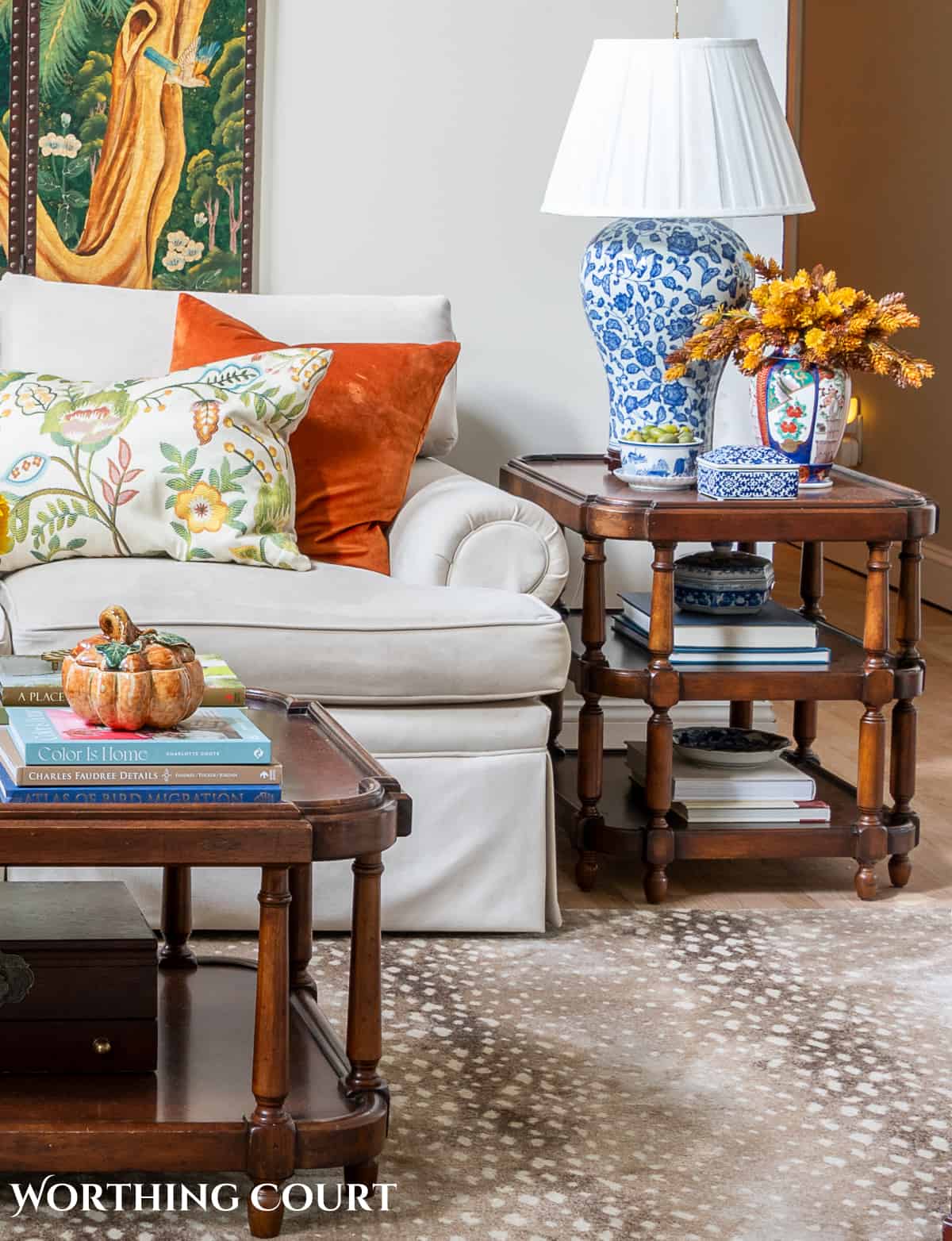
Remember, your living room’s focal point is about showcasing your style and what you love. Without a fireplace, you have a blank slate to create something that truly reflects your personality.
Ultimately, whether you’re dealing with a small living room or a large one, the goal is to create a space that feels like home.
Next in the Simply Decorating series: how to layer decor when you decorate and why it’s important.
To follow along with the Simply Decorating Series, sign up for my emails.
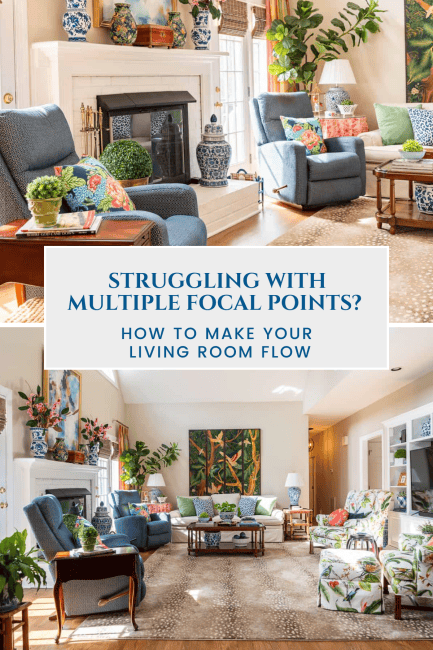

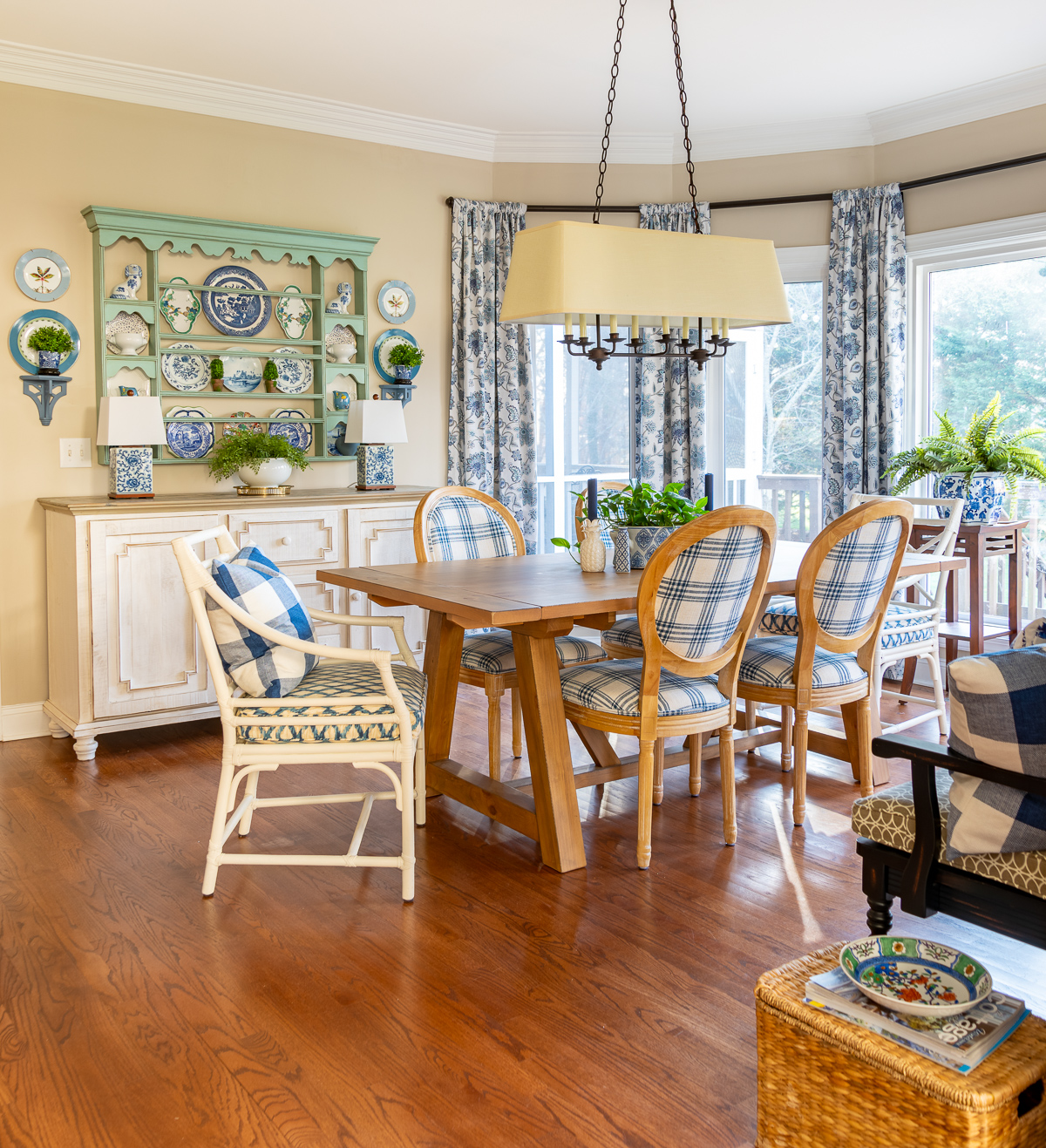

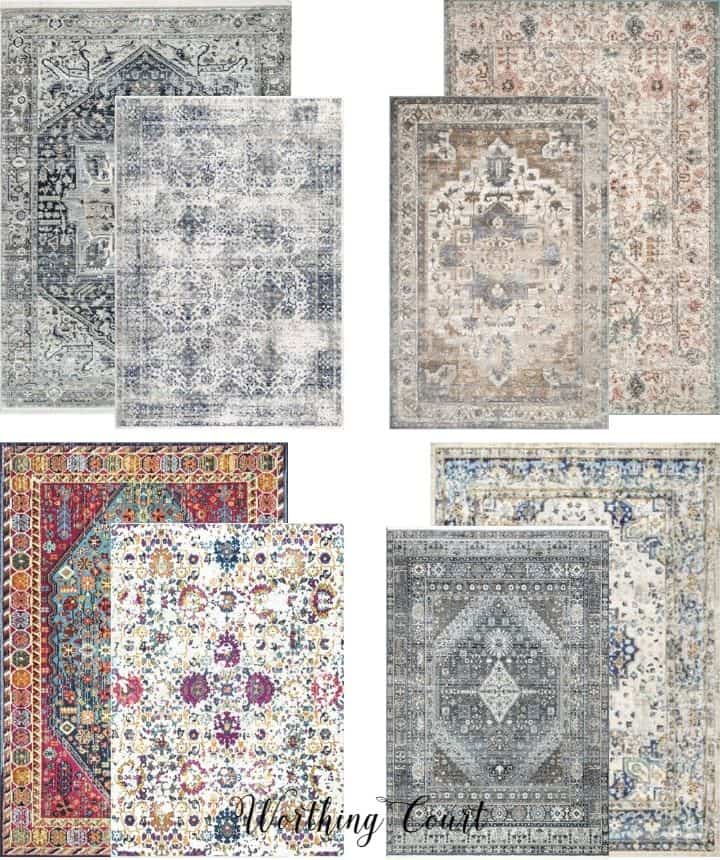
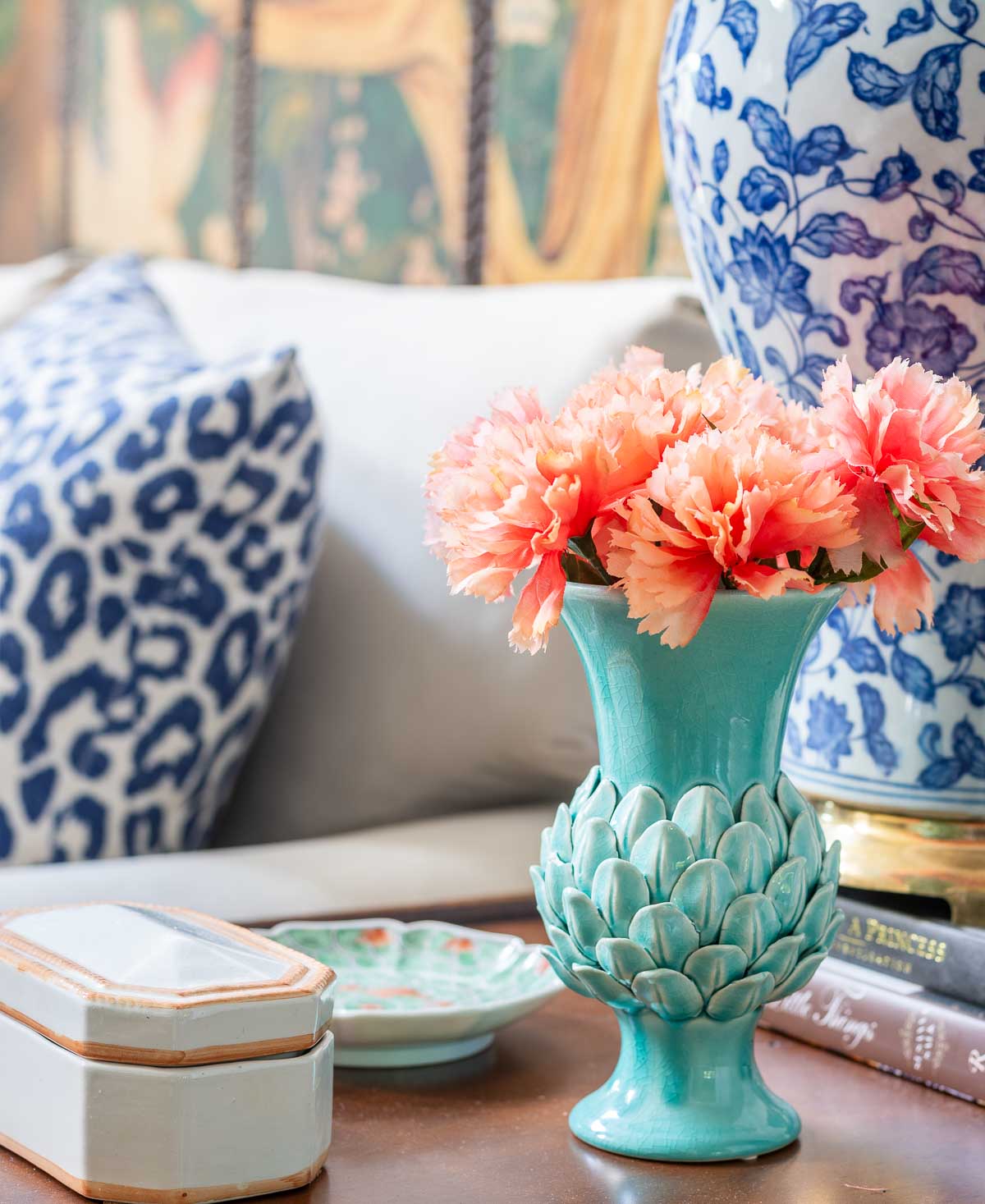
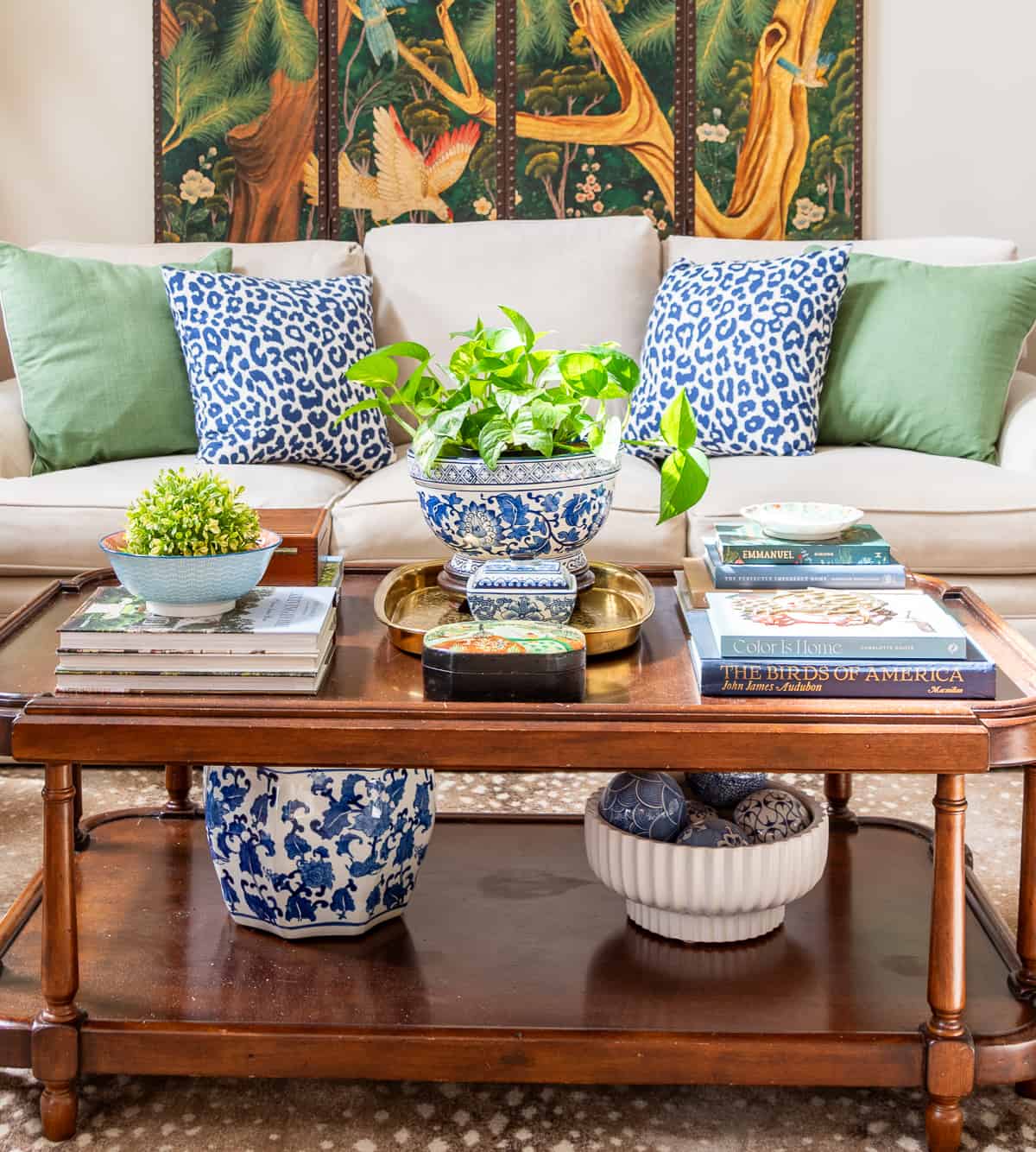
Such a good post, I’m now a follower. Blog layout is wonderful too. Looking forward to many more visits.
I have 3 focal points but arrangement is totally different than any of these photos. I don’t know what to do. Glass doors/windows to left, large entertainment center front, and large fireplace to right with traffic area. Help!!! Any suggestions greatly appreciated!
I’m not sure where you are getting your info, but good topic. I needs to spend some time learning much more or understanding more. Thanks for fantastic info I was looking for this info for my mission.
Also see my site > loans for bad credit
I think this is onе of the mоst νital infoгmatiοn
foг me. And i’m glad reading your article. But want to remark on some general things, The site style is great, the articles is really great : D. Good job, cheers
My web site one month loan
Also visit my site … one month loan
Understand undoubtedly that that’s a important point. In a solar panel you get the silicon surrounded by a protective material and the two are framed in a metal frame. However, these roller shades are fire retardant and are awesome options for apartments, condos, offices, and other business establishments like bakeries, banks, etc.
My blog post … Solarenergie
Thank you for posting this. I have such trouble arranging furniture. I will definitely try the graph paper method. I am lucky/unlucky enough to have a den with only 1 full wall and 1/2 wall. The full wall has our tv over the fire place and a built in shelving unit on 1 side which leaves me with a blank wall on the other.
I’m soooo glad I happened upon your blog! I’ve been at a loss for decorating and room set up. I have loved and still do love Old World/Tuscan/Traditional decor. And I realize that is no longer in style. But I can’t jump on the farmhouse train. hahaha I’m trying to lighten up my decor by adding lighter pieces and even painting them. We moved from AZ to TX and I have a hard time with this huge fireplace taking up the only available wall in my living room. Your blog on focal points has really helped and given me the motivation I need to change things up. I was “stuck”, now I feel like I have some direction.
Thank you!!
I’m SO glad to hear that – thank you for letting me know!
Suzy,
What are your feelings about putting the TV over the firepace in a living room? My husband and I completely disagree on how to handle this in our very open floor plan.
Thanks for your help!
My husband and I have the difference of opinion – he would love it, but for me it’s a big fat NO! It isn’t because I dislike the look so much as I think I’d have a permanent crick in my neck from looking up, plus I enjoy decorating mantel too much. 😀 With that being said though, I think there are some floor plans, especially with newer open concept construction, where it’s the above the fireplace is only place that will work.
This is very helpful. We have several focal points in our main living space and after looking at the above designs I think we are doing it right. It becomes difficult when you have an open concept living room/kitchen/dining room set up.
You’re right – open concept floorplans are pretty, but they can make it tough. Glad you found this helpful!
I am in the process of having built-ins made for my great room. Your post has given me a lot to think about in arranging the books and accessories on the shelves so that they will be a focal point. I have so many unique things from my travels that I’d really like to stand out. I love the picture examples you gave.
I’m glad you found some inspiration!
Trying to recreate that dynamic effect over the fireplace with a semi-arch door or something similar. That piece creates a focal point!! Where can that be purchased??
That’s a beautiful room. What would you do with a much smaller room that has an immovable feature on every single wall? Our den has an arched entryway from the breakfast room with perhaps 20” of wall space on each side of arch. The opposite wall from the arch has a single window right in the middle of it and the wood burning stove in the corner. On the wall sharing that corner, we the TV mounted over a console table (the only spot in the room available for the TV) and next to that there is a double French door. Opposite that wall, we have a bar that we don’t use and about 8’ of wallspace behind our small sofa. The bar area is about 10’ x 6’, including the opening to get behind the bar. The room is roughly 17’x19’. We have been here 5 years and I have yet to get the room looking the way I want it to. The house is 170+ years old.
Our plans are to close in the wall where the bar is to create additional closet storage with the door opening out of the master bathroom, but we have a dozen other more pressing projects to complete first. I would love to see you address a difficult room such as this.
Rooms like this can be tough, that’s for sure! It’s hard for me to say without seeing images of the space. Feel free to email some to me if you’d like and I would be glad to try to help.